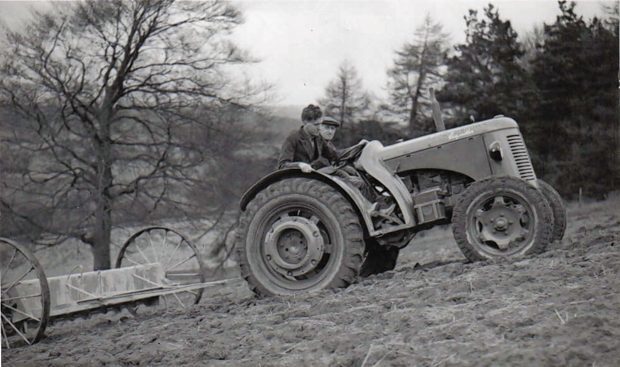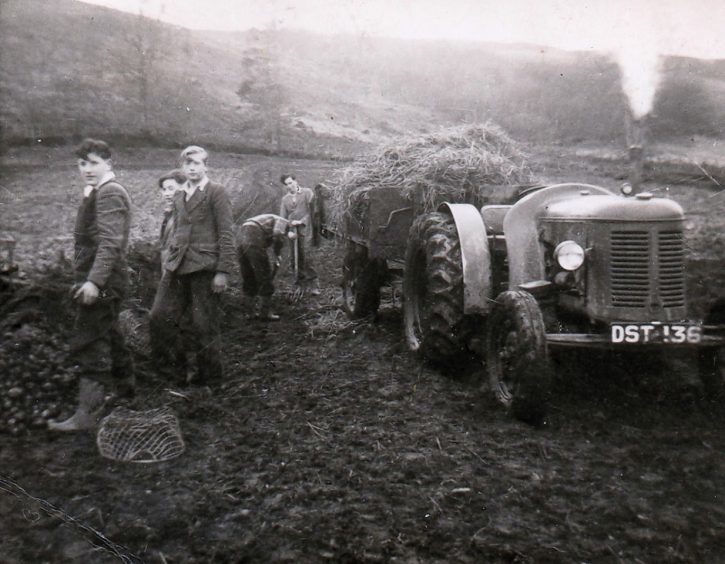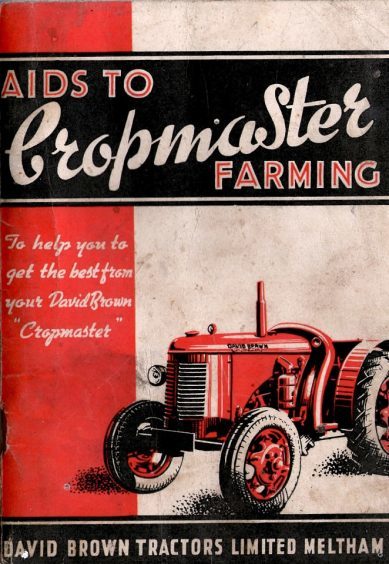One of the most iconic tractors ever built – the David Brown Cropmaster – turns 70 this month.
The David Brown Cropmaster was launched in April 1947 at David Brown’s tractor factory at Meltham near Huddersfield in the heart of the Pennines.
The first tractor was numbered P10001 and the National Farmers Union Disaster Fund, set up in the wake of the devastating floods caused by the heavy snowfall earlier in the year, was presented with the first one of the production line.
Although the tractor was not unlike its predecessors – the 1939 launched VAK 1 and the 1945 upgrade the VAK1A – it had a great many improvements and was indeed a brand new tractor. Released at a time of great demand for agricultural machinery the tractor was well received by potential customers and farming press alike.
David Brown was aiming to make a big mark in tractor manufacturing after 10 years in tractors, after firstly constructing Ferguson’s Type A and following Harry Ferguson’s departure to the USA, its own machines for agriculture and military use.
Designed for all farming tasks, as the name suggests, and a direct response to competitors using model names such as Farmall, Major and Universal.
The official David Brown designation was VAK 1C which stood for vehicle agricultural kerosene No.1. It followed the 1945 VAK1A upgrade and a development model – the VAK1B – which was going to look like another upgrade and was shelved in 1946. It is said the tractor actually inspired the new Nuffield tractors designed by ex DB employee Henry Merritt who had joined Nuffield in 1945.
The Cropmaster was a much newer design under the familiar tinwork of its forebears. It had an extended wheelbase cast in four parts and larger wheels. It had an integral hydraulic lift in the new back end and the gearbox offered six speeds, although the four speed option remained until 1949. With some of Ferguson patents running out it was able to be fitted with converging linkage although draught control was still unavailable.
A new paint supplier offered the traditional Hunting Pink colour in much brighter hues and at David Brown’s insistence his name appeared on large decals along the bonnet to increase exposure for greater sales.
One of the great features of these early David Brown tractors was the coal scuttle windshield and wide wings which gave the driver more protection. Cabs were also available for DB tractors with their own, Portland and Scottish Aviation versions available over the years. The Cropmaster was also blessed with a bench seat and as the tractor was slightly offset to give more weight on the land side for ploughing the driver sat on one side of the transmission tunnel. This gave room for passengers, male or female, on the nearside making for a real cosy situation.
Priced at £471 for the six speed version the tractor proved to be a strong seller and it is reported that in its first two years of production Fife dealer JBW Smith of Cupar sold 100 a year until Ferguson appointed a dealer in the area and the benefits of the Ferguson system took off.
David Brown had realised from the outset that tractor manufacturers had to offer matching implements for their machines.
The company had offered ploughs, cultivators and ridgers since 1940. The Cropmaster launch saw it increase the range greatly and not only did the company manufacture its own implements at Farsley near Leeds but also offered approved implements such as the three-way tipping trailer built by Alley, a saw bench from McConnell, and the Tasker built Paterson buck rake.
In 1949 DB who had designed its engine to be thus converted became the first British tractor builder to offer a factory fitted diesel version of the machine. Other versions included the uprated Super Cropmaster with side panels, wire mesh chaff screens and an exhaust top, the Prairie Cropmaster specifically designed for the North American market and a Vineyard version.
By 1953 with a line up of wheeled and tracked tractors and matching implements DB was one of the big boys.
With essential large export orders outstripping home sales the Cropmaster was replaced by the two cheaper 25 and 30 models after 60,000 had been produced.


